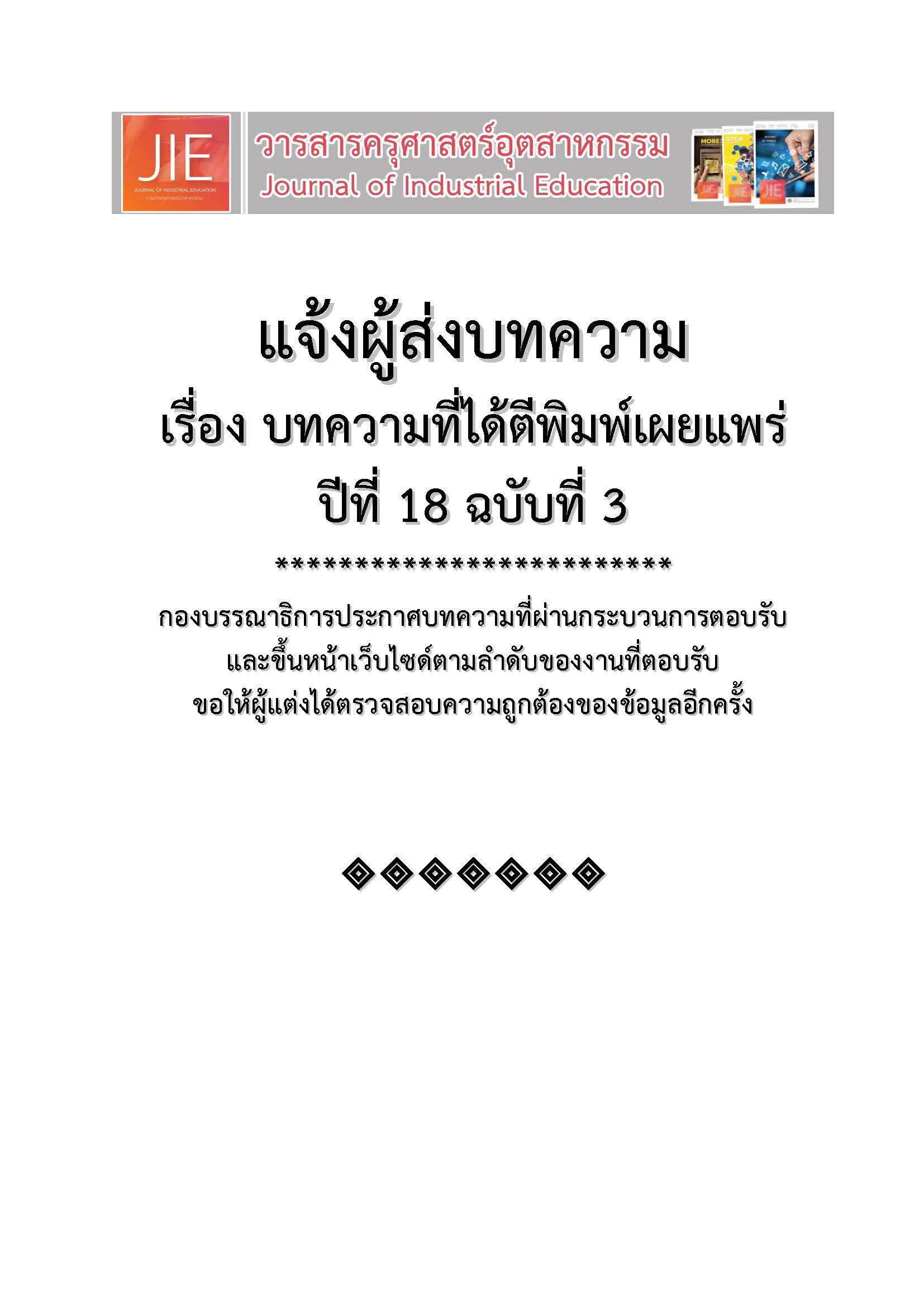PLAY-BASED LEARNING
Abstract
วัฒนธรรมของมนุษย์ทุกคนมีความปรารถนาที่จะเล่น “เล่น คิดว่าอาจเป็นกระบวนการสำคัญที่สนับสนุนชีวิตที่มีค่า” (Pellis and Pellis, 2009) วัฒนธรรมของผู้ใหญ่มักจะไม่เห็นความสำคัญของการเล่น ดังนั้นจึงเป็นเรื่องยากที่จะเข้าใจว่าอะไรหายไป ชีวิตผู้ใหญ่ที่ขาดการเล่น เรารู้ว่าการเล่นช่วยให้เด็กใช้ความคิดสร้างสรรค์ของพวกเขา ในขณะที่พัฒนาจินตนาการความชำนาญและความพัฒนาการทางร่างกายสติปัญญาและอารมณ์ ผู้ใหญ่ก็เล่นเพื่อหยุดพักจากการประชุม เพื่อเปลี่ยนจากภาวะปกติสู่โลกที่เต็มไปด้วยจินตนาการที่จะผลักดันตัวเองในรูปแบบใหม่ การเล่นมีความสำคัญต่อการพัฒนาสมองที่ดี (Shonkoff และ Phillips, 2000; Tamis-LeMonda et al., 2004) การเล่น สำหรับเด็ก คือการมีส่วนร่วมและโต้ตอบกับโลกรอบตัวพวกเขาและเป็นทำให้พวกเขาได้รับประโยชน์จากประสบการณ์ของพวกเขา ผู้ใหญ่ใช้การเล่นเพื่อสร้างความสัมพันธ์ กระตุ้นจิตใจและร่างกาย สำหรับเด็กการเล่นช่วยให้สร้างและสำรวจโลกที่พวกเขาสามารถเอาชนะความกลัวได้ และเป็นการฝึกฝนบทบาทผู้ใหญ่ บางครั้งก็เล่นร่วมกับเด็กคนอื่น ผู้ดูแล หรือผู้ใหญ่ (Barnett 1990; Pellegrini และ Smith, 1998; Hurstwitz, 2003; Smith 2488) ช่วยให้เด็กพัฒนาความสามารถใหม่ๆ เพิ่มความมั่นใจและความยืดหยุ่นของพวกเขา การต้องเผชิญกับความท้าทายในอนาคต สำหรับผู้ใหญ่แม้ว่าจะมีส่วนร่วมในการเล่นน้อยลง แต่มักจะหาวิธีในการสำรวจความเป็นไปได้และหาวิธีใหม่ๆ ในการควบคุม และความเชี่ยวชาญอาจเป็นวิธีในการค้นหา สถานการณ์การมีส่วนร่วม เป็นความท้าทายซึ่งเป็นที่ต้องการและหายากในชีวิตผู้ใหญ่
References
Jarealak Rattanaphan. 2012 "Principles and concepts of educational management for special learners" in subject matter 22769 Educational management for special learners, Unit 1 Sukhothai Thammathirat Open University, Nonthaburi
Chanchai Srisaiphet. 1984. Skills and teaching techniques. 2nd Edition, Bangkok: Pitak Aksorn Printing House
Niramon Chayutsahakit. 1981. Playing theory for intelligence development. Academic documents on the working group regarding the development of children's play equipment. Bangkok: Chulalongkorn University.
Lakha Piyaaddchariya. 1981. Playing is children's learning. Play and plaything to develop children. Bangkok: Chulalongkorn University Printing House.
Surang Chanaim. 1984. Developmental Psychology. Bangkok: Aksornbuddit.
Bergen, Doris, Ed. 1998. Readings from...Play as a Medium for Learning and Development. Olney, MD. : Association for Childhood Education International.
Gopnik, A., Meltzoff, A. N., & Kuhl, P. K. 1999. The scientist in the crib: Minds, brains, and how children learn. William Morrow & Co.
Hurlock, E. 1965. Development Psychology. New York : MacGraw – Hill Book.
Hurstwitz, SC. 2003. To be successful: let them play! Child Educ 79:101-102.
Lynn Barnett. 1990. Playfulness: Definition, design, and measurement. Play & Culture. 3 : 319-336
Moyles, J. 1989. Just Playing? The Role and Status of Play in Early Childhood Education. Milton Keynes : Open University Press.
Pellegrini, A. D. 2009. The Role of Play in Human Development. Oxford : Oxford University Press.
Pellis SM, Pellis VC. 2009. The Playful Brain : Venturing to the Limits of Neuroscience. One world Publications, Oxford Google Scholar.
Rowntree, D. 1981. A Dictionary of Education. New York : Harper References
Rudolps, M.; & Cohen, D.H. 1984. Kindergarten and Schooling. New Jersey : Prentice Hall.
Shonkoff, J. P., & Phillips, D. A. (Eds.). 2000. From Neurons to Neighborhoods : The Science of Early Childhood Development.
Smith D. 1945. How play influences children’s development at home and school. J Phys Educ Recreation Dance. 66 : 19-23.
Tamis-LeMonda, C.S., Shannon, J.D., Cabrera, N.J., & Lamb, M. 2004. Fathers and Mothers at Play with Their 2- and 3-year Olds: Contri-butions to Language and Cognitive Development. Child Development. 75(6) : 1806–1820.
Vouloumanos A1, Werker JF. 2007. Listening to language at birth: evidence for a bias for speech in neonates. 10(2) : 159-64. Wiley Online Library. https://doi.org/10.1111/j.1467-7687.2007.00549.x
Wassermann, S. 1992. Serious play in classroom. Childhood Education. 68(3) : 133-139
Zosh, J. M., Hopkins, E. J., Jensen, H., Liu, C., Neale, D., Hirsh-Pasek, K., Solis, S. L., & Whitebread, D. 2017. Learning through Play: A Review of the Evidence. Retrieved from The Lego Foundation. [Online]. Available : https://www.legofoundation.com/media/1063/learningthrough-play_web.pdf
Downloads
Published
How to Cite
Issue
Section
License
"The opinions and contents including the words in papers are responsibility by the authors."
"ข้อคิดเห็น เนื้อหา รวมทั้งการใช้ภาษาในบทความถือเป็นความรับผิดชอบของผู้เขียน"



